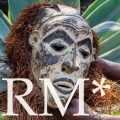“When I first lifted the statue from the ground, its weight struck me, and as I turned it over in the late afternoon sun, the worn gold shimmered,” Mr Thompson said.
The discovery has seen them spend considerable time and money investigating theories about how the small statue came to rest in the red dirt of the WA’s north.
Once only accessible by ship, Shark Bay was the birthplace of Western Australia’s pearling industry in the 1850s, driven by demand for pearl shell to make buttons.
Pearlers used Malay, Chinese and Aboriginal people as labourers, but eventually Chinese-owned pearling operations established their own camps in the region.
According to the WA Museum, a 1886 census counted 200 people involved in the Shark Bay pearl fishery consisting of 60 Europeans, 102 Chinese and 68 Malays, with the Chinese controlling seven of the 68 vessels in the Bay.
“If we can use the Buddha to bring people together, then I know it would make Nick really happy.”
Mr Thompson said finding the right custodians was vital.
“It’s important the statue goes to custodians who will connect with it, and Leon and I now feel a bond with Buddhism through this single object,” he said.


